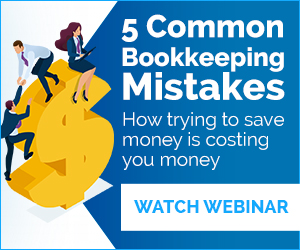As a business owner, you need to be able to not only create the financial documents for your business, but also should understand the differences between them. Having a strong grasp of your past and current financial status can help you determine what your future financial trajectory should be.
Keeping track of all these financial documents can be challenging, and many business owners have accountants handle their documents on their behalf. However, it is extremely important as a business owner to understand your key financial documents, including your cash flow statement and your profit and loss statement. While these financial documents appear similar in many ways, they have very important and distinct differences.
Cash Flow Statement
A cash flow statement allows a business owner an overview of all their financial activities. Payments, as well as expenses, are listed so that you can see exactly where all your money comes from, and where it is going. This statement also helps a business owner regarding the practical matter of knowing how much cash your business needs on a day-to-day basis. This important financial document essentially shows all the incoming and outgoing cash of the entire business in one financial statement.
A cash flow statement will also show a business owner if they made or lost cash during the specified period indicated. Oftentimes, business owners create cash flow statements quarterly; however, they can be created as often as you wish to determine your cash flow.
Making sure you have monthly cash flow statements may more accurately help you determine what type of liquidity and cash you need as a business owner for every month. Additionally, learning the specific sections of a cash flow statement will help a business owner understand how better to use this information for their financial benefit in the future. The three main sections of a cash flow statement include operating activities, investing activities, and financing activities.
Operating Activities
Every business has income and expenses that create either increases or decreases in cash. These calculations of cash flow will help a business owner understand their true income and costs before other factors, such as additional financing or investments, are included.
Investing Activities
When a business sells or buys any property, equipment, or long-term investments, these transactions directly affect the availability of cash in a company. Knowing the investing activities of a company from the cash flow statement can help a business owner determine if they should limit spending in the near future, or if they have enough cash to purchase additional equipment or investments.
Financing Activities
In many cases, a company will have its own stocks or bonds. Any information regarding the cash inflow or outflow regarding the sale of equity securities or the issuance of shareholder dividends will be documented here in the cash flow statement.
Negative Cash Flow
It is also important to understand that negative cash flow is not an automatic indication of a failing business. It is possible that a business owner made the decision to invest a great deal of cash into certain inventory or to expand a factory. These expenses that drastically reduced the cash flow of a business were paid in order to provide the opportunity for the company to grow and develop for the future. If your cash flow statement consistently shows a negative balance, that is quite different than having a specific incident that requires your business to have a negative total on your cash flow statement for a short period of time.
Ultimately, cash flow statements are critical to a business owner to help them understand if they generated enough income in order to keep their business profitable.
Profit and Loss Statement
A profit & loss statement (P&L statement) can also be referred to as an “income statement” by accountants and financial experts. A profit and loss statement is different than a cash flow statement because it illustrates the company’s profit (not cash) and losses over a period of time, which can be monthly, quarterly or yearly. While a cash flow statement will tell a business owner how much cash they have on hand to make payroll or purchase a piece of equipment, a profit and loss statement will help a business owner make the determination if their business is actually profitable or not. This financial statement is crucial to understanding if a business is strong or weak financially.
A profit and loss statement will show the sales (also referred to as income), costs (also referred to as expenses), and net income (also referred to as profits) of a company. Along with many other subtotals, these numbers capture the financial health of a company and if it is profitable or not.
Essentially, a profit and loss statement allows a company to accurately look at a period of time and determine if their company was profitable or not.
Short-term vs. Long-term Financial Snapshots
Cash flow statements and profit and loss statements serve very different functions and deliver very different information to a business owner.
For example, cash flow statements show a business owner a quick short-term snapshot of the financial health of their company. Cash flow statements can be generated even on a weekly basis to help a business owner determine if they have enough cash to pay their expenses, bills, and invoices. It is always important to understand as a business owner that you may have the ability to make a profit, but still not have sufficient cash flow. Looking at a cash flow statement can help you understand exactly what your cash needs are and if they are being met within a specified period of time.
In contrast, if a business owner is attempting to understand what their business looked like several months ago and how it has developed over time, a profit and loss statement will better help them make that determination. Profit and loss statements are more intended to be viewed over a long period of time, versus a short time period as with a cash flow statement. Additionally, with the ability to look at a longer time period, a profit and loss statement will help a business owner make projections regarding their overall financial picture and help them determine what their financial future will look like based on these projections.
Why Both Cash Flow and Profit and Loss Statements Are Necessary
If you are a business owner, you likely have many questions that need to be answered daily regarding your finances. Knowing which financial documents will answer these questions can greatly improve your decision-making power regarding your company.
Cash Flow Statement
If you are looking to answer the following types of questions, you should look at your cash flow statement.
- Can I afford to pay my bills, invoices, or other expenses this month? This week?
- Do I have enough cash on hand to pay for that equipment that just broke yesterday and needs to be fixed immediately?
- Can I fully fund payroll this week? This month?
- Do I have enough cash to purchase this office equipment on sale right now?
Questions of an immediate nature that can only be answered by knowing if enough cash is currently available will likely require evaluating the cash flow statement.
Profit and Loss Statement
If you are looking to answer the following types of questions, you should look at your profit and loss statement.
- How did my company perform financially last year? In the last three years?
- Where is my business spending money that I can cut over time?
- Would a lender trust me to repay any financing that I currently need?
- What is my expected financial trajectory and projections based on the past year? Based on the past three years?
Questions of a longer-term nature are more likely to be answered in the profit and loss statements of a company.
Profit vs. Cash
As many business owners know, profit does not always equal cash in a business. Cash flow can be much higher or lower than profit, and cash flow can even be negative if a business is earning a profit. Understanding how profit differs from cash can also help a business owner understand why they need to look at both a cash flow statement and a profit and loss statement and the differences between them.
If you sell your goods and/or services throughout the year, you may have a great deal of cash from those sales, but some of your profit may still be recorded in accounts receivable. Accounts receivable is money that is owed to a business by debtors who have received a good or service but who have not actually paid yet. Therefore, depending on the financial records, it is very possible for a company to be profitable, and yet not have enough cash for the month as that profit is recorded as accounts receivable.
In other cases, if you sell goods, as a business owner, you could have chosen to increase your inventory by $1 million dollars this year. However, if those goods have not actually sold yet, then your cash expenses for the year are much higher than your income. Additionally, there are other financial factors to consider, including the deprecation of goods (which could potentially affect the profit of a business at the end of the year, but not the cash flow).
Due to the fact that there are so many financial variables to consider as a business owner, it is critical to understand, not only the differences between a cash flow statement and a profit and loss statement, but also understand why those differences directly impact the finances of a business, and should impact the decisions a business owner makes regarding their business.
Key Takeaways
The key takeaways regarding the differences between a cash flow statement and a profit and loss statement for business owners are as follows:
- Both cash flow statements and profit and loss statements are necessary financial reports for a business owner.
- A cash flow statement only shows a business owner their inflow and outflow of cash over a specific period of time and will not show if the company is actually profitable.
- A profit and loss statement will only show a business owner if they have been profitable or not over a period of time and will not show the amount of cash available for payroll or purchases.
- A profit and loss statement will also show additional information to the business owner, including the company’s total expenses and revenue, as well as other financial information, such as the depreciation of assets.
A business owner should know the financial overview of their company and their company’s financial health. Understanding whether the company has enough cash to make payroll or purchase equipment, as well as understanding whether it is financially risky or safe to obtain an additional loan given the trajectory of the company, are all part of being a wise business owner.
Contact Anderson Advisors
Understanding how to read these financial documents is a learned skill and, oftentimes, some of the numbers may not make sense, especially if you are not an accountant or attorney. However, it is critical that, as a business owner, you exercise due diligence to understand these financial statements for your company in order to help you make better financial decisions, not only this week, but throughout the future of your business.
If you are struggling to create or understand the financial documents necessary to operate your business or would like assistance regarding any of your financial or accounting issues, schedule a consultation with a specialist or call our office at 877-965-3751.


